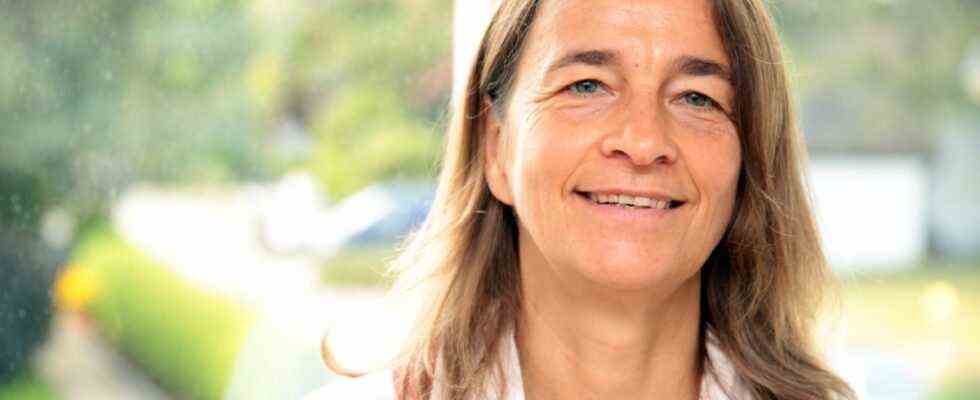There is one sentence Ina Weichel can’t stand. When people say that a dying person is “no longer accessible”. She declared war on this sentence. The head of the hospice service of the Malteser Aid Service based in Graefelfing is known to her colleagues for this. “I get passionate about that.” The sentence was her mainspring for 20 years to support the hospice movement. The little signs a dying person can give are too often overlooked. “Man is there until the end.” To perceive these signs, to convey affection, care and trust to a person to the last, is an affair of the heart to her. Ina Weichel will retire on August 31st. Your work with the Maltese is symbolic of the development of the hospice movement.
Weichel came to the Maltese in Graefelfing as a volunteer hospice helper. At that time there was no full-time job in hospice work, and few people knew what hospice workers do. 20 years later, under the management of Weichel, there are another five full-time employees and more than 100 voluntary hospice helpers under the umbrella of Malteser. The hospice movement has become better known and, above all, valued: At the beginning of life, people need help and care, says Weichel. In the end, he needs someone to accompany him, as does his relatives. This is what the hospice helpers do.
The successor is Yvonne Bär.
(Photo: Johannes Simon)
Weichel was a volunteer hospice helper for eight years before she took over the management of the adult hospice service at the Maltese in 2009, and also the children’s hospice service in 2016. The Maltese are in action in the Würmtal, beyond that to Fürstenried-West in one direction and Neuaubing in the other. The northern district of Starnberg from Gilching is also included, as is the western district of Munich. In the children’s hospice service, the Maltese cover the entire city and the district of Munich. There are also other organizations in the area that offer hospice services, such as the Würmtal Hospice Association. The initiatives exchange ideas, there is a good coexistence, says Weichel.
In the course of her work, she has accompanied numerous people on their last journey. How many? “About a lot,” is the answer. She didn’t count. But she has learned that knowing about the process of dying is not everything. That it is more a question of the attitude – that of the hospice helpers, which is characterized by benevolence, respect, sensitivity, openness to processes and the belief that people can do a lot. In her training courses she always conveyed the importance of posture in a special way. It is her personal legacy that she leaves to the Maltese.
Retires: Ina Weichel.
(Photo: Johannes Simon)
Ina Weichel also leaves her future tasks behind. Removing hurdles when it comes to looking at the end of life is one of them. Dying, death and grief are still issues that trigger fear of contact. Relatives, nurses or doctors often know much earlier than the person affected that the dying process is beginning. The referral to the hospice services could be improved, says Weichel. This requires a “language ability”: to find the right words to name the end, and not to scare, but to take. According to Weichel, the Maltese would like to offer courses under the title “Last Help for Nursing” in autumn. They are intended to teach those who are interested in how to deal with the end of life in a good way.
In September Yvonne Bär takes over the management of the hospice services. She has been a hospice helper since 2007 and most recently worked at the Foundation Ambulantes Kinderhospiz München. She also sees her task in generating offspring for a new generation of volunteers. And then there is another anniversary: in 2022, the Maltese hospice service will be 25 years old.

